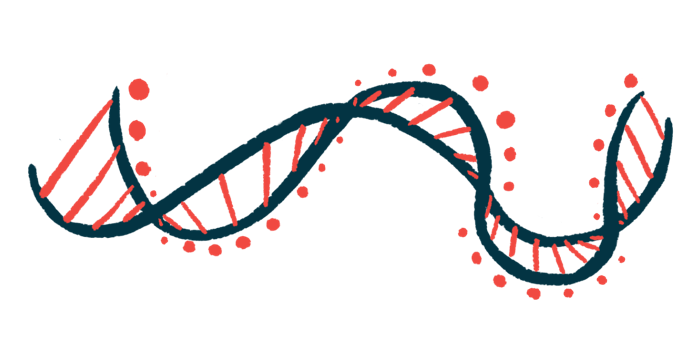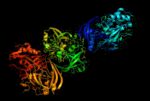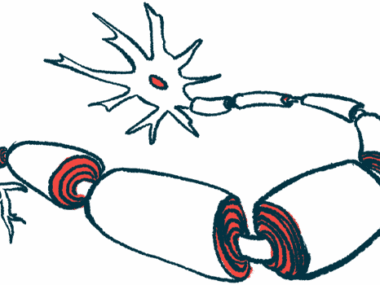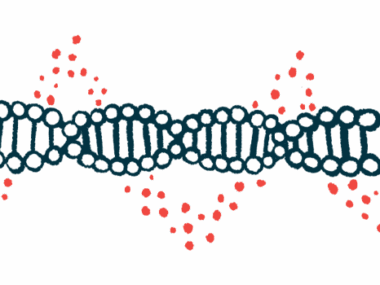Mutation in PMP22 gene is risk factor for mild CMT, study finds
But it's not clear why the T118M variant doesn't always cause the disease
Written by |

A particular mutation in the PMP22 gene, called T118M, is a risk factor for developing a mild form of Charcot-Marie-Tooth disease (CMT) — but it doesn’t always cause the rare disorder, according to a new study.
A series of experiments in cell cultures revealed possible reasons why T118M leads to milder outcomes compared with other CMT-causing mutations. One finding is that the variant produces a protein product that’s less prone to forming toxic clumps inside cells.
“T118M PMP22 is a risk factor that predisposes human subjects to a typically mild form of CMT,” the researchers wrote.
But they add: “It is not clear from this study what the colluding risk and/or protective factors are that determine which T118M PMP22 carriers develop CMT.”
The study, “How T118M peripheral myelin protein 22 predisposes humans to Charcot–Marie–Tooth disease,” was published in the Journal of Biological Chemistry.
Investigating the workings of the T118M mutation
CMT encompasses a group of disorders marked by peripheral neuropathy, or damage to the nerves that send signals to and from the brain and spinal cord and the rest of the body.
PMP22 gene mutations are the cause of some types of the rare disease, including CMT type 1A — the most common subtype — and CMT type 1E.
For most genes, a person has two copies — one inherited from each biological parent. In most cases of CMT type 1 and its subtypes, only one of these copies needs to be mutated for the disease to manifest.
But this is not the case for the T118M mutation, in which one copy of the variant doesn’t always cause symptoms of CMT. When it does, symptoms are relatively mild.
Now, researchers at Vanderbilt University School of Medicine, in Tennessee, sought to determine the reasons why this mutation seems milder than others.
First the team looked at a database containing genetic information from more than 125,000 people in the general population. Results showed that T118M was common in people of Western European descent, occurring in about one in 75 people. It was less common in other ethnic groups, however.
Combining that information with U.S. Census data, it was determined that about one in 120 people in the U.S. have the mutation, whereas one in 2,500 individuals have some form of CMT or peripheral neuropathy.
Ultimately, that means that T118M is about 20 times more common than all forms of CMT combined. In other words, fewer than 5% of people with T118M in the U.S. develop CMT.
“The collusion of other risk factors and/or the absence of one or more normally protective factors is evidently required to cause noticeable peripheral neuropathy,” in patients with a single T118 mutation, the researchers wrote.
A series of experiments in cell cultures were performed to better understand why this might be the case.
The findings showed that the version of the PMP22 protein with the T118M mutation traveled to the surface of the cell less efficiently than healthy, or wild-type, versions of the protein.
Specifically, while 17%-25% of wild-type protein could reach the cell surface, only 3.5%-5% of the mutant protein could.
A trend was observed in which the more wild-type PMP22 protein a cell makes, the less of it reaches the surface. This wasn’t the case with the T118 mutant protein, which generally had similar trafficking efficiency regardless of production.
When the wild-type PMP22 and T118M mutant PMP22 were expressed together in the same cell cultures, they did not influence each other’s trafficking properties.
That means that in patients, “considerable PMP22 still correctly surface traffics in these human subjects — most from expression of the WT allele [gene copy], but with a significant contribution from T118M,” the team wrote.
T118M PMP22 is a risk factor that predisposes human subjects to a typically mild form of CMT … [but] it is not clear from this study what the colluding risk and/or protective factors are that determine which T118M PMP22 carriers develop CMT.
Additional experiments revealed that the T118M mutant protein is also less prone to form toxic aggregates or clumps inside the cell, unlike another neuropathy-associated PMP22 mutation called L16P. In fact, T118M was even less likely to clump up than the wild-type protein.
“These results suggest that, while prone to mistraffic, T118M PMP22 induces only a mild form of CMT in part because it does not significantly form toxic intracellular aggregates” — making it “evidently easier for cells to manage and degrade than more severe disease mutant forms,” the team wrote.
The mutant protein, while less stable, exhibited a structure and dynamics similar to the wild-type, in contrast to L16P, which is more unstable.
Those similarities further explain the mild consequences of this PMP22 gene variation, according to the researchers, who noted “the modest fraction of T118M that does reach the PM [plasma membrane; cell surface] likely is functional.”
Finally, a screen of genetic data from nearly 90,000 people revealed that T118M was associated with chronic, repetitive incidents of carpal tunnel syndrome (CTS), a type of peripheral neuropathy not usually linked to CMT, “indicating that CMT and CTS share at least one risk factor.”






